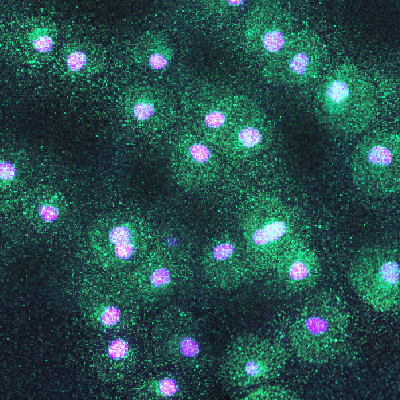Dance of the RNases: coordinating the removal of RNA-DNA hybrids
Two research teams led by Professors Brian Luke and Helle Ulrich at the Institute of Molecular Biology have deciphered how two enzymes, RNase H2 and RNase H1, are coordinated to remove RNA-DNA hybrid structures from chromosomes. In their article, which was published today in Cell Reports, Brian and Helle show that RNase H2 removes RNA-DNA hybrids after DNA replication, and then any remaining RNA-DNA structures are removed by RNase H1, which acts independently of cell cycling.
DNA sometimes interacts with RNA to form RNA-DNA hybrid structures called R-loops that regulate gene expression and DNA repair. However, having too many is also a risk for DNA damage and can lead to neurodegenerative disease and cancer. R-loop removal is catalysed by the enzymes RNase H1 and RNase H2. However, it was never fully understood how these important enzymes are coordinated. In their study, the Luke lab dissected the distinct roles of RNase H1 and H2 by engineering yeast to express either RNase H1 or H2 only during specific phases of the cell cycle and then testing their ability to remove R-loops.
With support from the Ulrich lab, they show that RNase H2 primarily acts to process R-loops during G2, while RNase H1 is able to remove R-loops in either G2 or S phase. Surprisingly, RNase H2 actually induced more DNA damage in S phase, which required a special type of DNA repair called homologous recombination to fix. This pathway was not previously known to act during S phase. Therefore, this study may have revealed an unexplored repair pathway which counters damage caused by RNase H2 activity during DNA replication.
For the full press release, please click here. This press release is also available in German.
